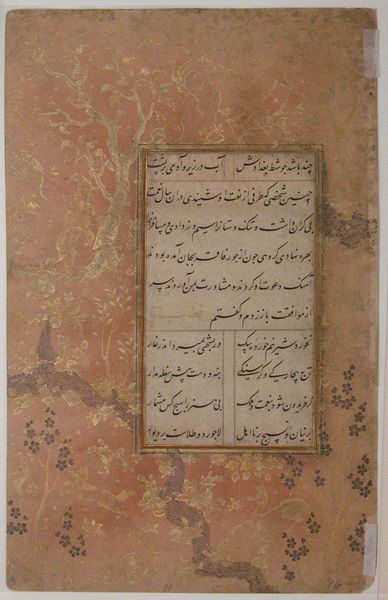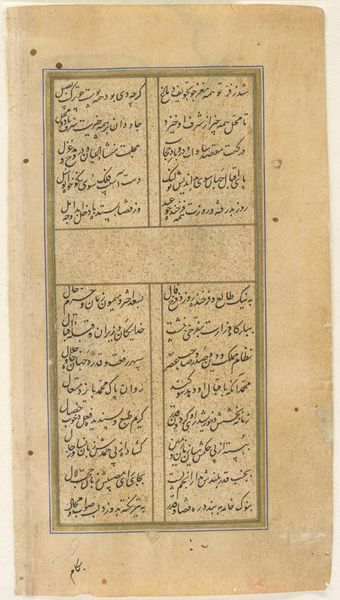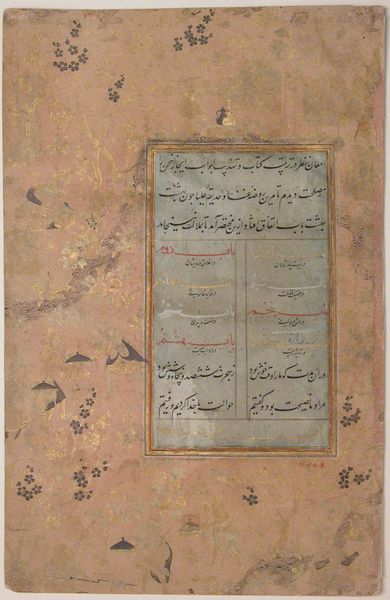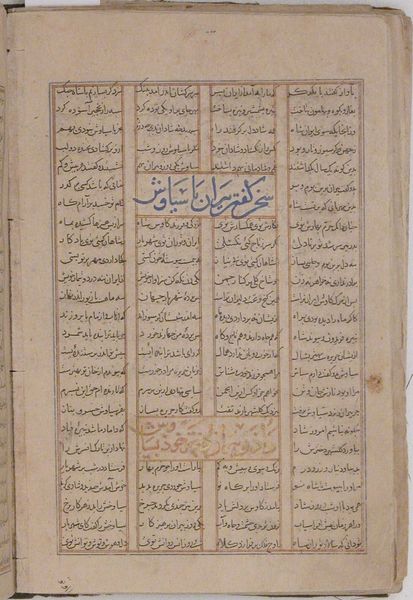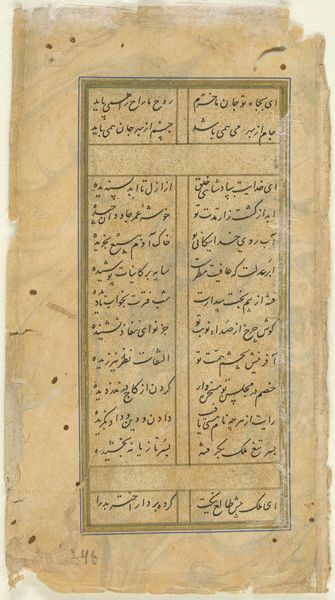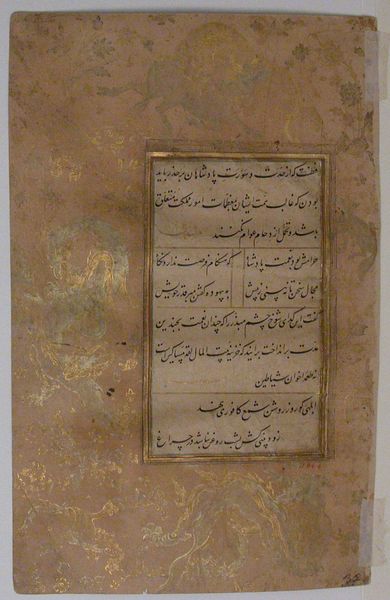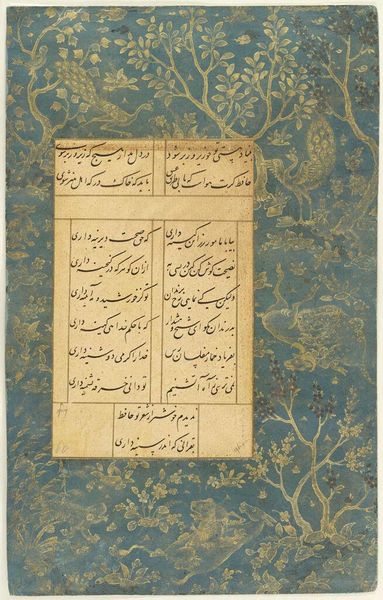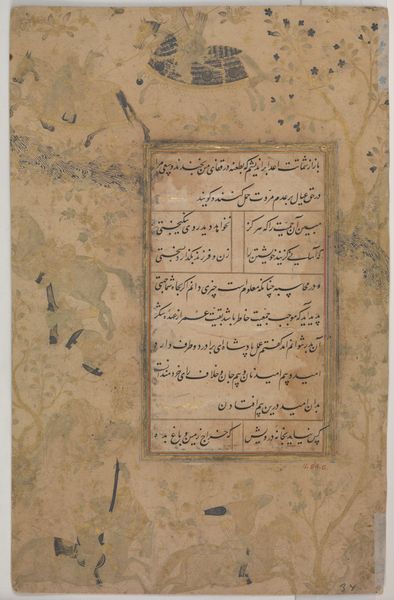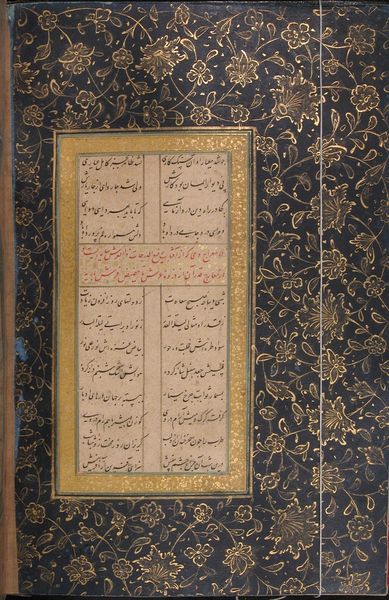
Page of Calligraphy from an Anthology of Poetry by Sa`di and Hafiz 1475 - 1499
0:00
0:00
drawing, textile, paper, ink
#
drawing
#
water colours
#
ink painting
#
textile
#
paper
#
ink
#
coloured pencil
#
underpainting
#
islamic-art
#
calligraphy
Dimensions: H. 11 7/8 in. (30.2 cm) W. 7 1/2 in. (19 cm)
Copyright: Public Domain
Curator: Here we have a "Page of Calligraphy from an Anthology of Poetry by Sa`di and Hafiz," dating from between 1475 and 1499. It's currently housed at the Metropolitan Museum of Art. What strikes you first about this piece? Editor: The aged paper really grabs me. It's like looking at parchment worn smooth by the passage of time, filled with an elegance born of meticulous process. And is that gold shimmering in the background? Curator: It is! The piece utilizes ink, watercolors, and what appear to be coloured pencils on paper—possibly with textile elements worked in, too. You'll notice an intricate marble-like pattern beneath the calligraphy. It serves almost as an ethereal landscape against the neat text blocks. Editor: It's a testament to labor. Someone meticulously created the paper itself. Grinding pigments, sizing, burnishing...it all speaks to immense, careful handwork that seems to almost disappear beneath the supposed 'higher art' of the calligraphy itself. It also makes me think of the circulation of these anthologies, almost a portable expression of refined power. Curator: The text itself showcases stunning examples of calligraphy, a highly revered art form in the Islamic world. It's both beautiful and functional, communicating verses by two major Persian poets: Sa'di and Hafiz. Look at how the strokes vary in thickness and pressure; notice the delicate curves. It becomes an embodiment of spiritual grace and aesthetic excellence. Editor: Do you see any evidence of drawing as underpainting beneath some of those clouds or flourishes on the margin? Curator: Quite possibly. These artists didn’t merely "write"; they constructed universes within these pages. These weren’t mass produced prints. They represent individual works created with unique handiwork for an exclusive audience, connecting power to artistic patronage and labor to ritual significance. Editor: It certainly elevates text to a level beyond mere information conveyance. You realize just how precious the written word can be when presented in this way, don’t you? It gives new meaning to how labor manifests as class aspiration, even divinity. Curator: It transforms reading into a form of visual meditation—the rhythmic structure of the script, together with the subtle shifts of the background washes invite contemplative participation. Editor: So, beyond simply displaying poetry, this artwork gives visibility to its elaborate mode of production and reception. Its cultural purpose rests squarely on artistic practices. Curator: Indeed. A powerful union of word and deed expressed through dedication to skillful art making.
Comments
No comments
Be the first to comment and join the conversation on the ultimate creative platform.

